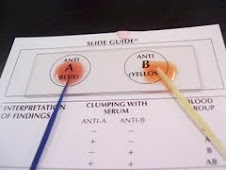
A persons handwriting has long been used as a form of identification. This is why people are required to sign checks, wills, deeds, and contracts. A persons handwriting and fingerprints are similar in the form that no two people wright the same way. There are two types of writing, request writing and non-request writing. Request writing is when the person sits before you and produces the writing. This type of writing usually does not carry as much weight in court because it give the person a chance to change their writing and the person will sometimes be nervous which gives inadequate results. The more familiar types of handwriting are cases in which the signed signature is questioned of being forged. A deliberately altered signature is another type of questioned signature. This is often where the person signs a document, making some noticeable changes, usually done in letter form, and then claims it is not their signature. "The cut and paste" is also another type of forgery or documetn fraud. This is usually when the person takes the original signature from the orginal document and makes a photo copy of it making it into a fraudulent document.







Your blog is gaining more information! Great job! Looks great!!
ReplyDelete